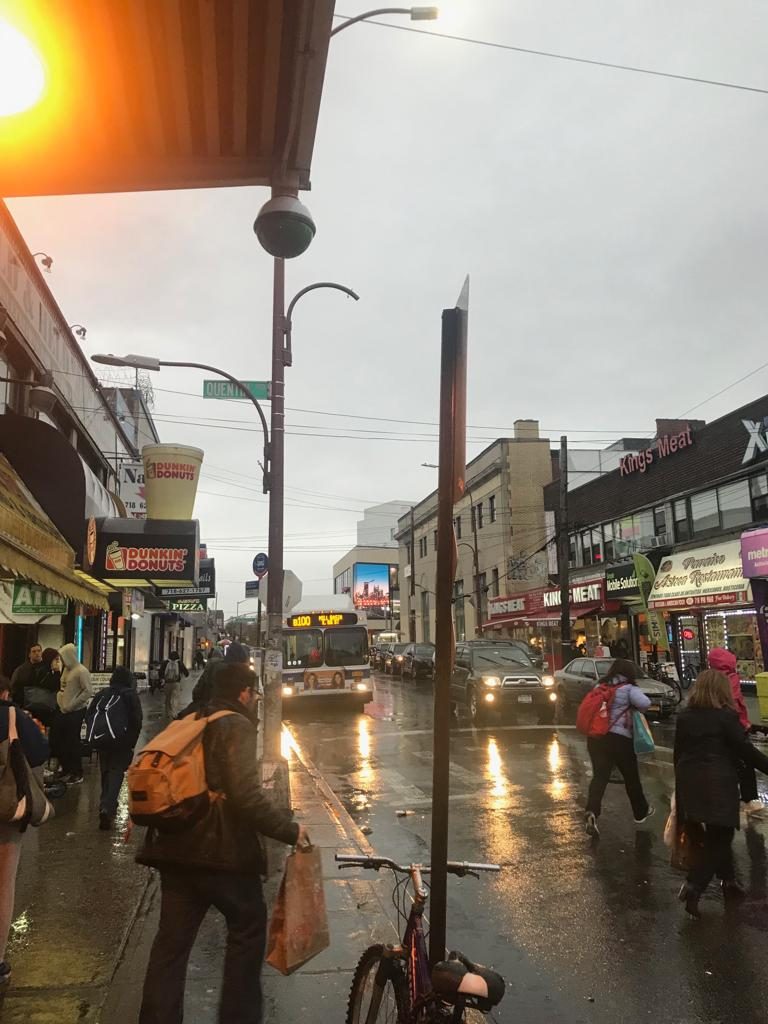
On the night of December 5th, our class had the opportunity to watch the play called “Jungle” at St. Ann’s Warehouse in DUMBO, Brooklyn. Rachel, Frieda, Renee, Esther and I planned our travels to the play early on, but even with so much planning, there was unforeseen circumstances. There was a big car accident on our way to the play which caused a lot of traffic. In the end, we got to the play seven minutes late and were told to wait 15 minutes. However, they told us that the 15 minute wait was a miscommunication and that we had to wait 50 minutes until intermission. We came back after 40 minutes and waited until it was intermission. We asked when intermission would be and they said they did not know. They did not let us wait inside, rather they let us freeze in the bitter cold of the night. We waited a solid hour in the cold, and we had all become numb. The ushers and security were mocking us from inside the establishment, which was very rude.
We missed the first half of the play so I was very confused what was going on at the beginning of the second act. Nevertheless, the entire set up of the play was spectacular since it made me feel like I was in the Jungle refugee camp too. One striking scene that had stuck in my mind was how the play ended. Everyone in the refugee camp was told by the volunteer that they will never be evicted or moved ever again. The whole cast broke out into celebration by singing and playing drums. I felt joyful and glee that the refugees would get to stay united during those trying times. However, I remember from our readings and class discussion, that the words of hope from the volunteer were false. In an instant all the music stopped, the cast froze, and the room went silent. The narrator, Safi, was the only one speaking and telling the audience that they were evicted. The northern part of the jungle was destroyed, then the southern part, and then the entire jungle was destroyed. He said there were over a 100 children who had gone missing. All the attention was on Safi and the silence in the room made his words all the more powerful. The quick shift from happiness to sadness at the end was very memorable to me. As I was sitting on the bench watching this whole scene break down, I was heartbroken. I wished the play had ended on a happy note, since the refugees deserved to have better lives after all the trauma and pain they have endured. However, the play was constructed in a way to show you the truth, and not a happily ever after that never happened. They want the audience to see the refugee’s point of view in the Jungle and not only the manufactured rhetoric from the media.
I am very thankful to have seen this play and been informed about this refugee camp. I would have never heard about the jungle if it was not for this class and play. The play was an extraordinary experience unlike any I have ever encountered before and without a doubt blew me away. I missed the first half of the play, but the second half that I did see is one I will never forget.
 As I stepped into the show “Martha Rosler: Irrespective” in the Jewish Museum, I came across a variety of different art forms that were very new and unfamiliar to me. There was a huge mobile prosthetic leg, a set dinner table, videos, photomontages, hanged diaper cloth, and more. The entire show presented me with a whole new experience as an observer, since my previous museum experience only consisted of paintings. Martha Rosler’s art can be constituted as avant-garde art since her art is both experimental and unconventional in the art world. Rosler’s art was pushing the boundaries of traditional art works, and causing observers such as myself to reevaluate our understanding of “what is art?”
As I stepped into the show “Martha Rosler: Irrespective” in the Jewish Museum, I came across a variety of different art forms that were very new and unfamiliar to me. There was a huge mobile prosthetic leg, a set dinner table, videos, photomontages, hanged diaper cloth, and more. The entire show presented me with a whole new experience as an observer, since my previous museum experience only consisted of paintings. Martha Rosler’s art can be constituted as avant-garde art since her art is both experimental and unconventional in the art world. Rosler’s art was pushing the boundaries of traditional art works, and causing observers such as myself to reevaluate our understanding of “what is art?”









